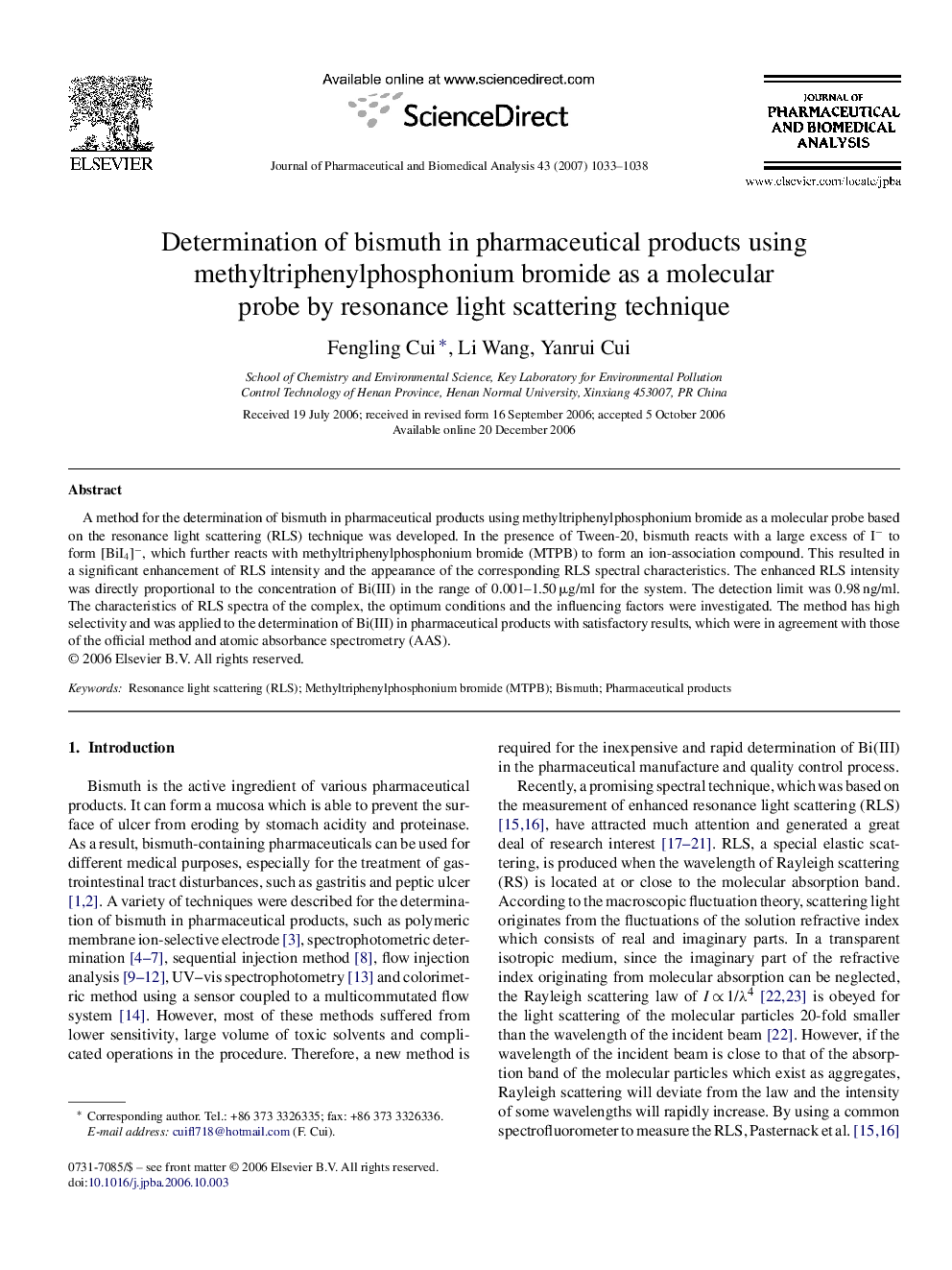| Article ID | Journal | Published Year | Pages | File Type |
|---|---|---|---|---|
| 1224668 | Journal of Pharmaceutical and Biomedical Analysis | 2007 | 6 Pages |
Abstract
A method for the determination of bismuth in pharmaceutical products using methyltriphenylphosphonium bromide as a molecular probe based on the resonance light scattering (RLS) technique was developed. In the presence of Tween-20, bismuth reacts with a large excess of Iâ to form [BiI4]â, which further reacts with methyltriphenylphosphonium bromide (MTPB) to form an ion-association compound. This resulted in a significant enhancement of RLS intensity and the appearance of the corresponding RLS spectral characteristics. The enhanced RLS intensity was directly proportional to the concentration of Bi(III) in the range of 0.001-1.50 μg/ml for the system. The detection limit was 0.98 ng/ml. The characteristics of RLS spectra of the complex, the optimum conditions and the influencing factors were investigated. The method has high selectivity and was applied to the determination of Bi(III) in pharmaceutical products with satisfactory results, which were in agreement with those of the official method and atomic absorbance spectrometry (AAS).
Related Topics
Physical Sciences and Engineering
Chemistry
Analytical Chemistry
Authors
Fengling Cui, Li Wang, Yanrui Cui,
